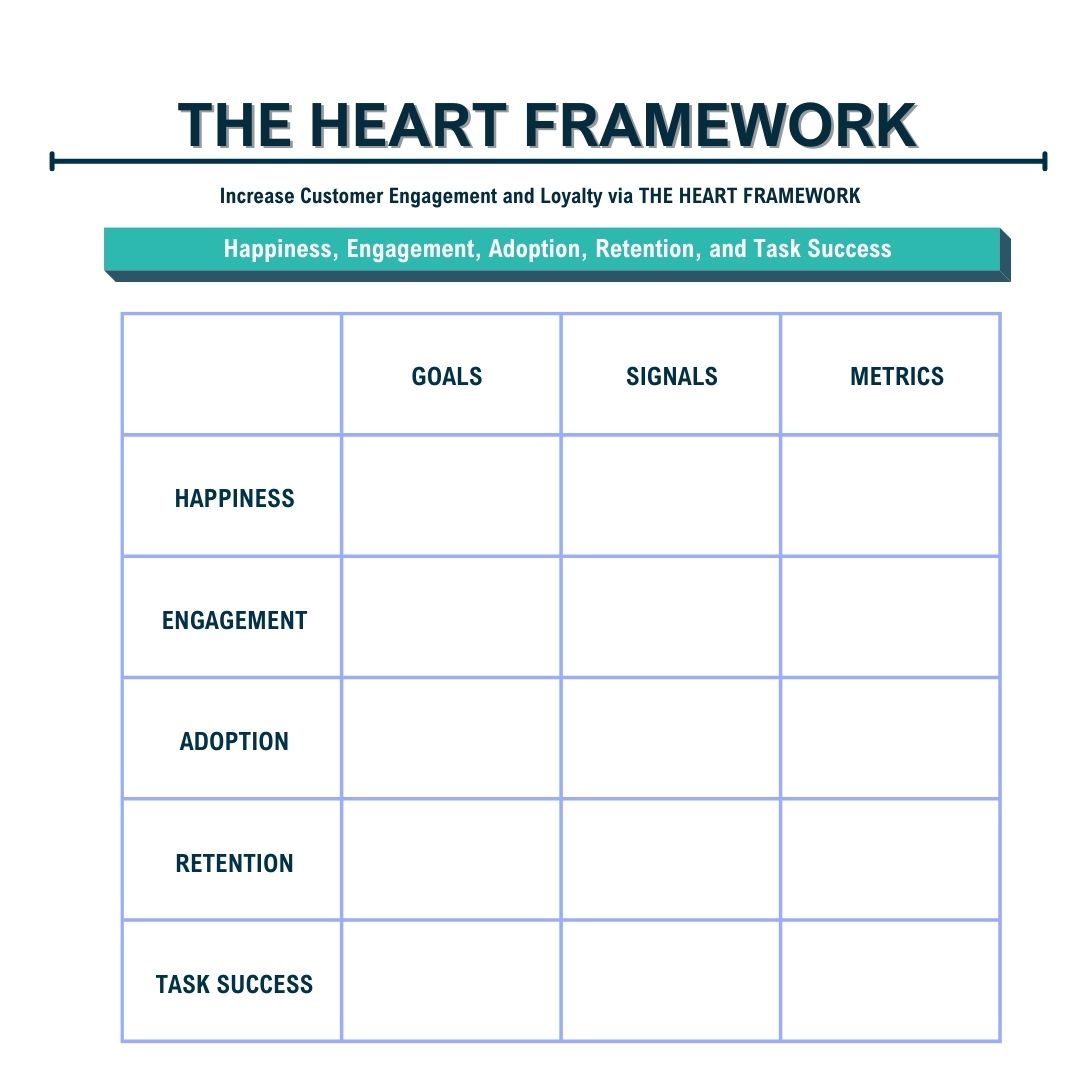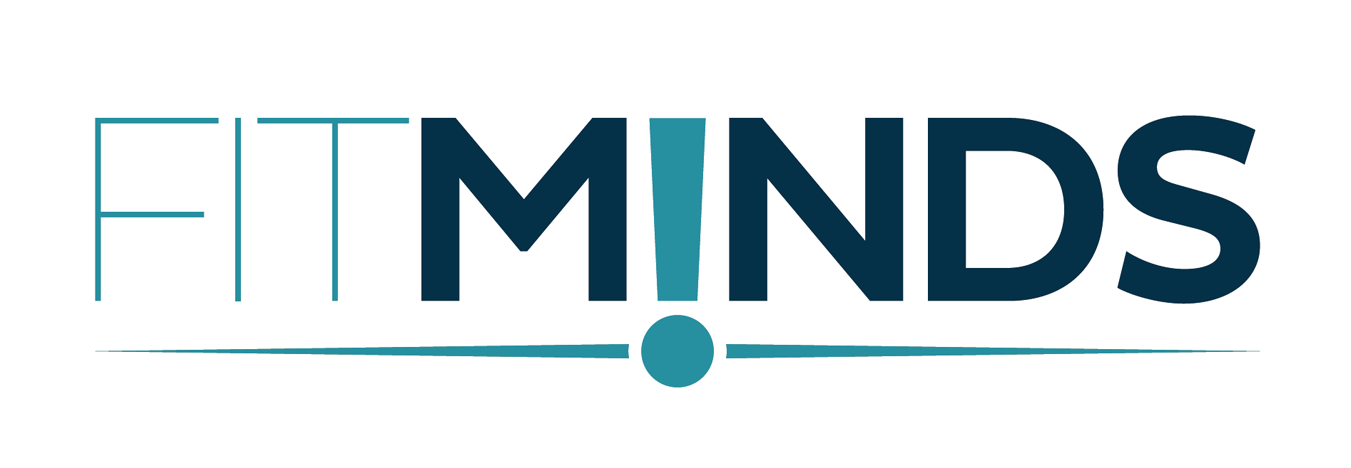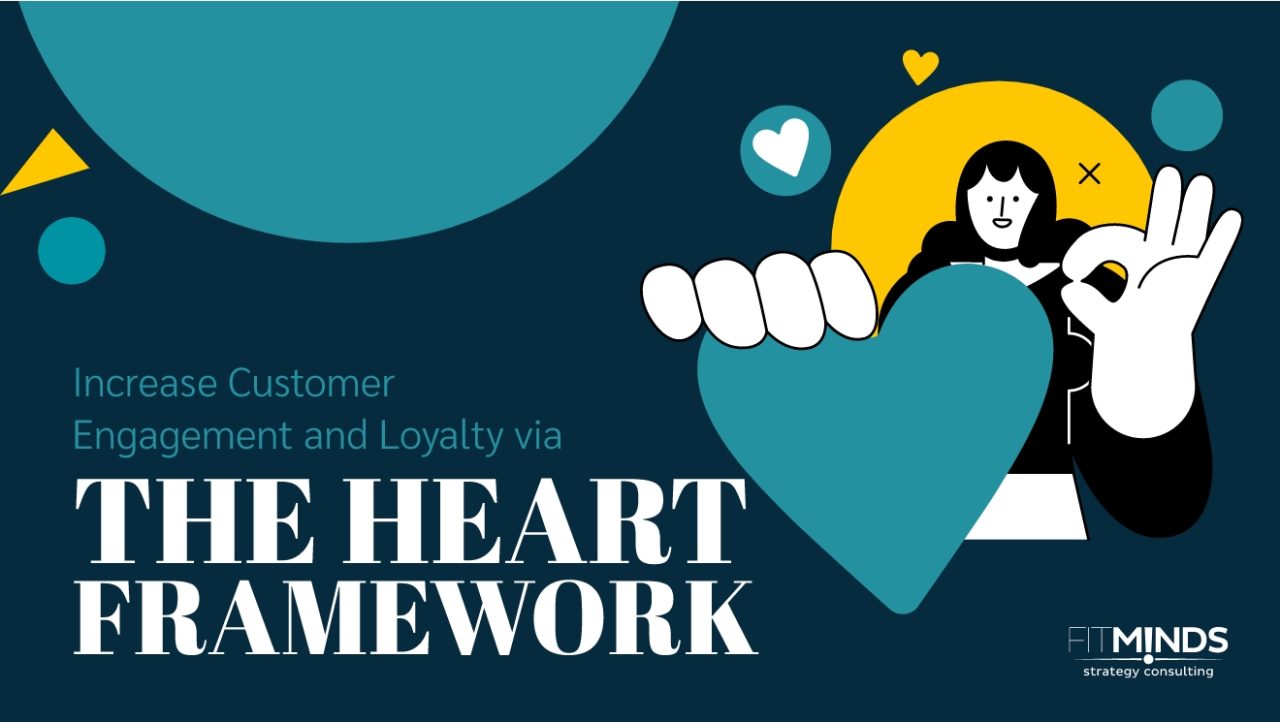The HEART Framework is an approach for measuring and improving the user experience (UX) of products or services. It provides a structured methodology for organizations to assess various dimensions of user satisfaction and engagement. HEART stands for Happiness, Engagement, Adoption, Retention, and Task Success.
Main Benefits of The HEART Framework
The HEART Framework allows organizations to gain a comprehensive understanding of various aspects of the user experience.
The HEART Framework helps:
- to align marketing efforts with user needs and expectations,
- to identify specific areas of the user experience that may need improvement,
- to increase user satisfaction, enhance engagement, and improve task success rates,
- to make data-driven decisions based on actual user behavior,
- to track progress over time and measure the impact of UX enhancements.
Explanation of The HEART Framework
The HEART Framework is a user-centered measurement approach developed to enhance the user experience by combining both qualitative and quantitative data. The framework considers not only functional aspects but also emotional and behavioral aspects of user interactions.
HEART is an acronym that stands for Happiness, Engagement, Adoption, Retention, and Task Success. Each of these components represents key aspects of user satisfaction and interaction with a product or service.
Happiness: Refers to users’ overall satisfaction and emotional response to the product or service. It is often measured by user satisfaction surveys, app ratings, and reviews.
Engagement: Measures the level of user interaction and involvement with the product. Engagement can be measured by the frequency and depth of user interactions.
Adoption: It focuses on how many people accept and become regular users. It involves measuring the growth in the number of new users over a period of time and the percentage of customers using a new feature.
Retention: Retention metrics measure the proportion of users who continue to use the product or service during defined time intervals, reflecting the level of user loyalty. It evaluates the product’s capacity to keep users engaged and retained.
Task Success: Measures how effectively users can complete tasks or reach their objectives within the product. This involves monitoring specific user actions or success rates.

The steps to using the HEART Framework involve defining clear objectives, determining measurable indicators, and selecting specific metrics. Here’s an explanation of each step:
- Set Goals:
Clearly define the objectives you want to achieve with your product or service, focusing on the user experience. Examples include improving user satisfaction, increasing engagement, or enhancing task success rates.
- Define Signals:
Identify measurable indicators that provide insight into whether your goals are being met. Signals can include both qualitative and quantitative data sources, such as user feedback, surveys, and user reviews.
- Choose Metrics:
Select specific metrics aligned with the defined signals to assess and track your product’s or service’s performance. Metrics can include the average user satisfaction rating, changes in the Net Promoter Score over time, or sentiment analysis of user reviews.
Example usage:
Goal: Increase user satisfaction. Signal: User surveys and feedback. Metric: Average user satisfaction score.
How to Apply The HEART Framework
To apply The HEART Framework to your business, FITMINDS is providing an adoption of the model that fits your company and your company’s needs. By using The HEART Framework, organizations can increase customer engagement and loyalty.
Contact us to get more information or discover your probable personalized roadmap for The HEART Framework.
Additional Tips and Readings
- You can learn more about customer decisions with the Loyalty Ladder
- You can learn more about customer satisfaction with the Kano Model
- To read more about the creation of habitual behaviors, you can check The Aida Model
- To read more about customer behavior, you can check The Hook Model of Behavioral Design
Contact us to increase customer engagement via The HEART Framework.



13 comments
Pingback: buy cheap androxal canadian sales
Pingback: buy enclomiphene online new zealand
Pingback: ordering rifaximin usa where to buy
Pingback: get xifaxan without a script
Pingback: cheap staxyn cheap fast shipping
Pingback: buy avodart cheap melbourne
Pingback: buy dutasteride medication cod
Pingback: prescription flexeril cyclobenzaprine without
Pingback: buy gabapentin without a prescription overnight shipping
Pingback: kamagra kanada objednávka
Pingback: usa fhizer kamagra
Pingback: ordering fildena generic dosage
Pingback: buy cheap itraconazole canada discount
Comments are closed.